Squirrels, with their bushy tails and inquisitive eyes, make for delightful subjects in art. This guide will take you through the process of drawing a squirrel, from simple outlines to detailed features, making it easy for artists of all levels.
Table of Contents
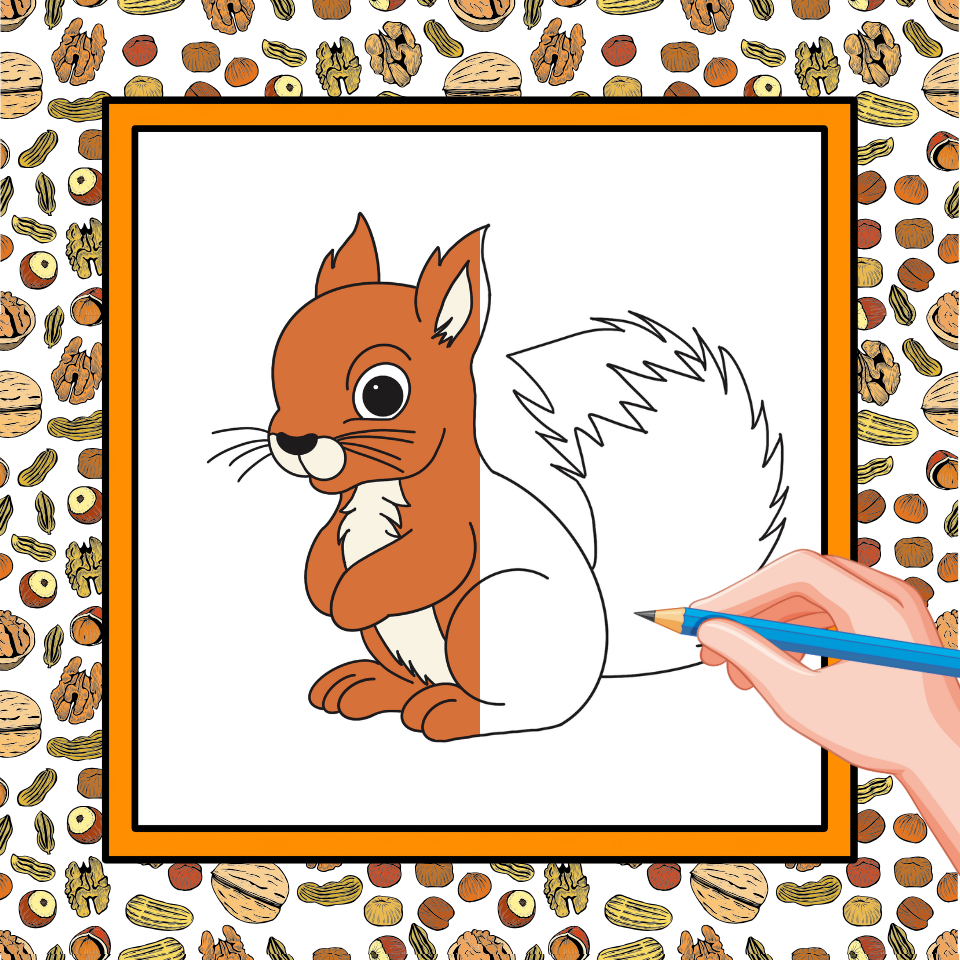
Step 1: Sketch the Basic Shapes
Begin by drawing the basic shapes that form the squirrel’s body. Sketch a large oval for the body and a smaller circle for the head. These shapes will serve as the foundation of your squirrel drawing, helping you maintain proper proportions.
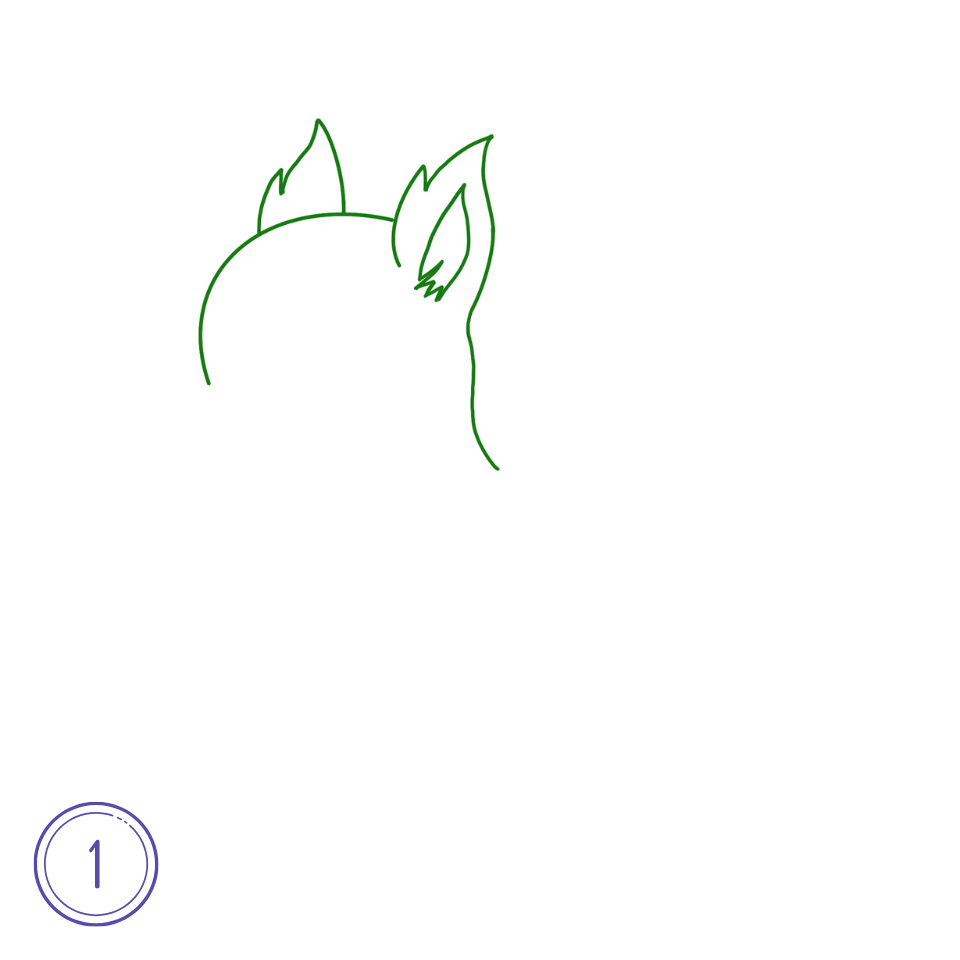
Step 2-3: Define the Head and Facial Features
Refine the head’s shape, adding the ears, eyes, nose, and mouth. Squirrels have round, expressive eyes, so make sure to capture this feature. A simple line can indicate the mouth, and a tiny dot can serve as the nose. Don’t forget the whiskers for added cuteness.

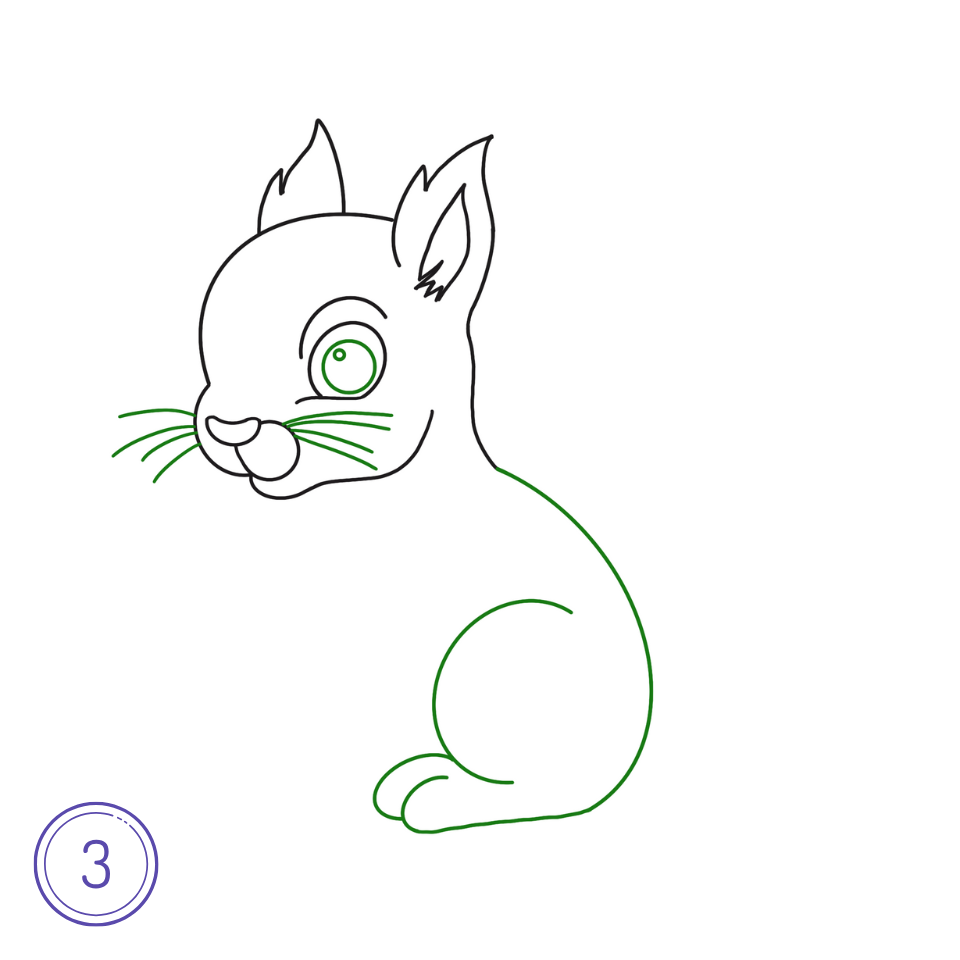
Step 4-5: Add the Tail and Limbs
Squirrels are known for their large, fluffy tails. Draw a long, curved shape extending from the back of the body to represent the tail. For the limbs, sketch four small ovals for the arms and legs, ensuring they’re positioned to mimic the squirrel’s lively posture.
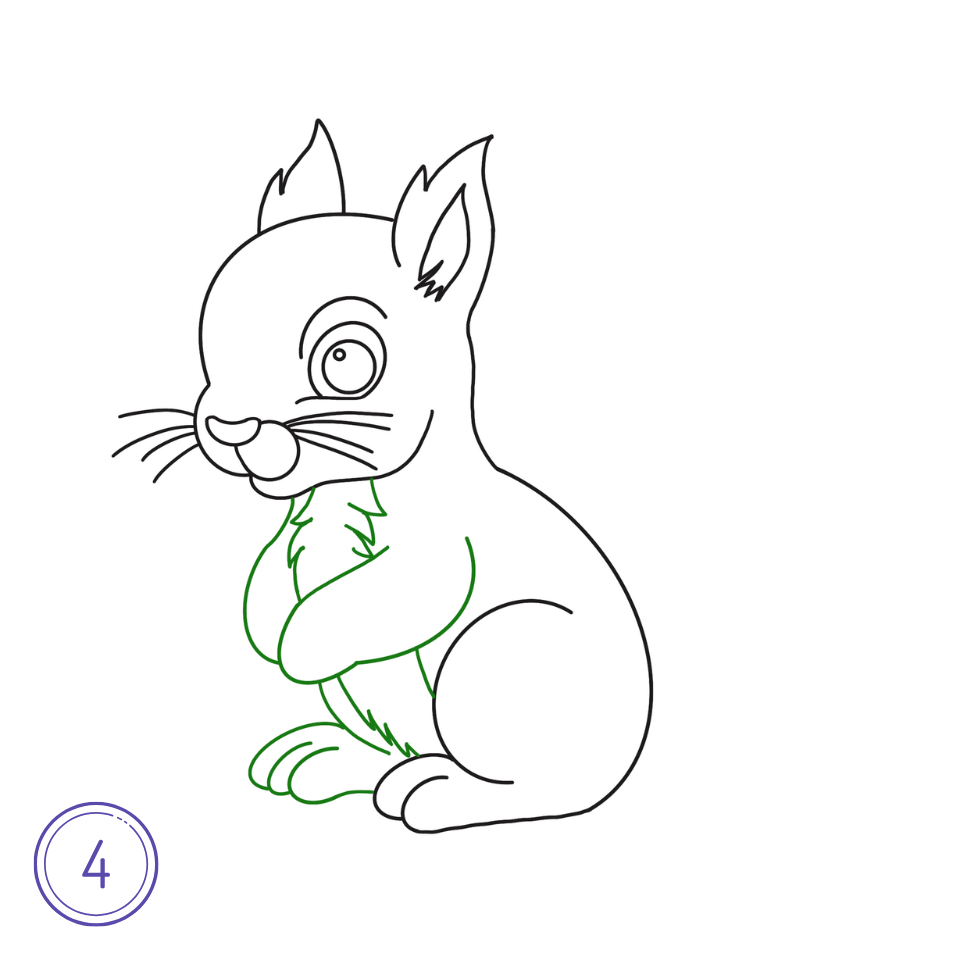
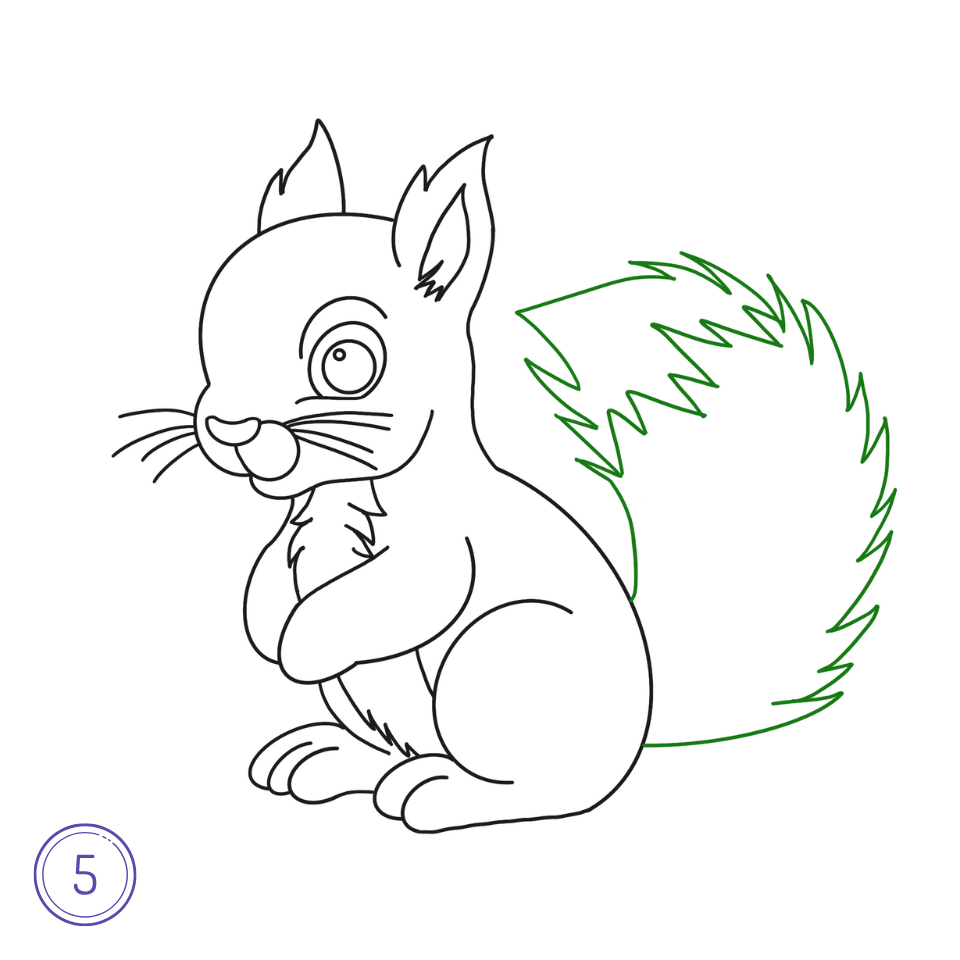
Step 6: Color the Squirrel
Start with a base layer using light brown or gray, depending on the type of squirrel you’re drawing. Gradually build up the color by adding darker browns or grays along the squirrel’s back, tail, and legs to create depth and highlight the natural fur patterns. Add a soft pink or light beige to areas like the nose, inner ears, and belly for contrast. Layering your colors carefully will make the fur look more realistic and textured.
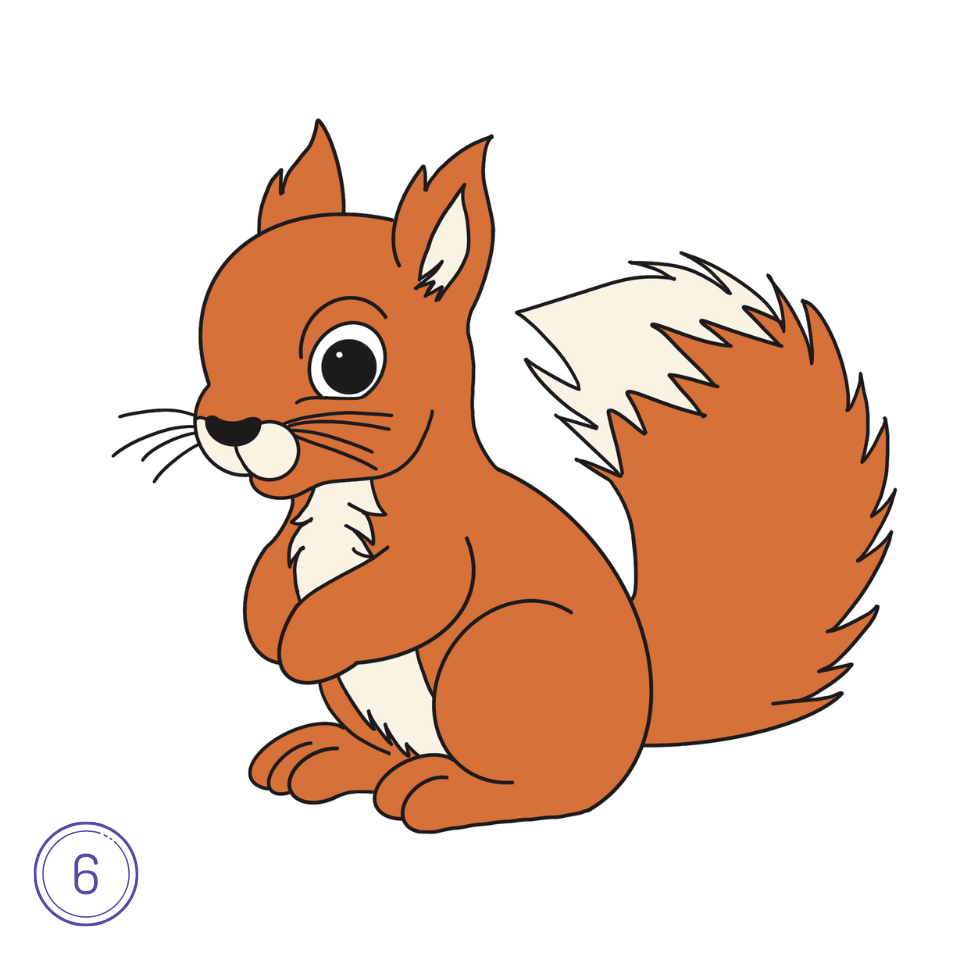
Step 7: Adding the Background and Additional Elements
With the squirrel colored in, start sketching a background to set the scene. Draw a tree trunk or branch under the squirrel to give it a sense of grounding. You can add details like leaves, nuts, or acorns around it to create a natural environment. For a more detailed background, consider sketching surrounding forest elements like additional trees, bushes, or a few scattered leaves as if they’re falling. Soft greens and browns for the background will complement the squirrel without overshadowing it, while touches of red or orange in the leaves could add seasonal interest.
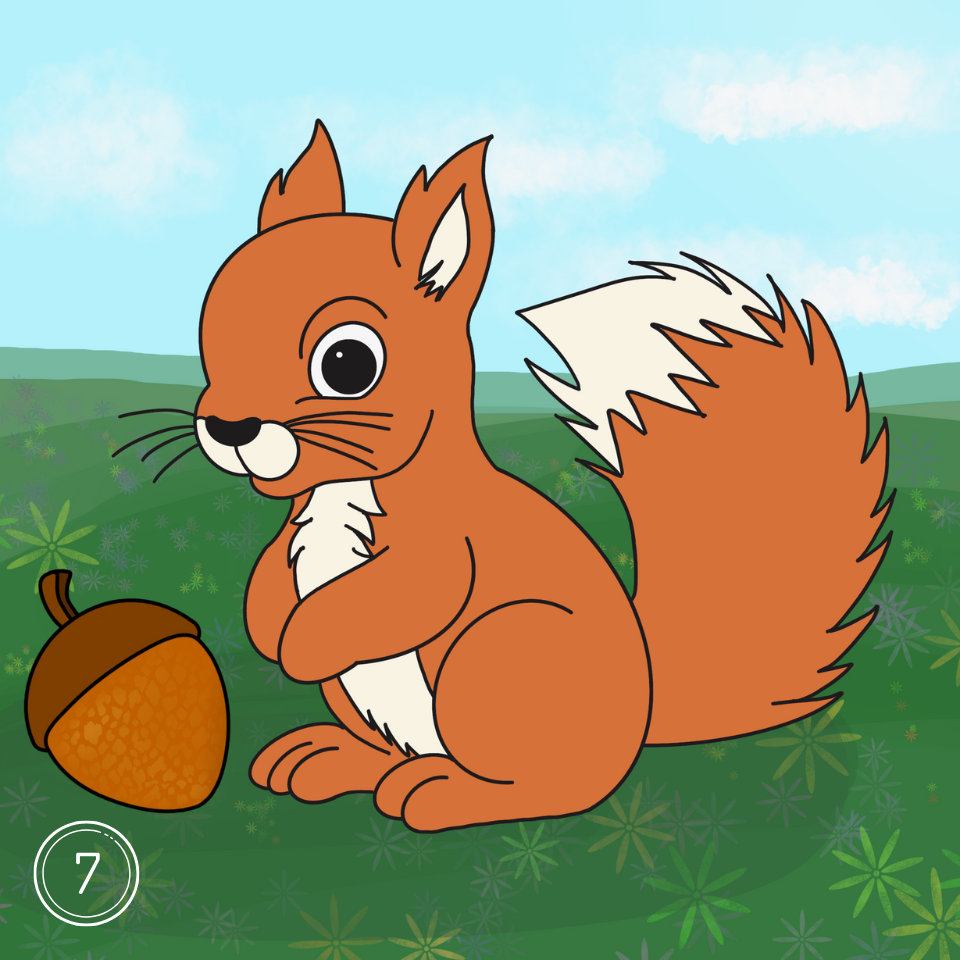
Drawing Variations:
- Cute Squirrel Drawing: Emphasize large eyes and a small nose, and position the squirrel holding a nut for an adorable effect.
- Realistic Squirrel Drawing: Focus on detailed fur texture, accurate body proportions, and natural poses.
- Cartoon Squirrel: Simplify the shapes and features, using bold lines and vibrant colors to bring out the character’s personality.
Conclusion
Drawing a squirrel offers a wonderful opportunity to practice capturing the lively spirit and delicate features of wildlife. Whether you’re creating a simple sketch, a cute character, or a detailed realistic portrayal, the key is to observe and practice. Look at pictures of squirrels to understand their anatomy and expressions better, and don’t hesitate to draw from different angles. With patience and practice, you’ll be able to create beautiful squirrel drawings that reflect your unique artistic style.
